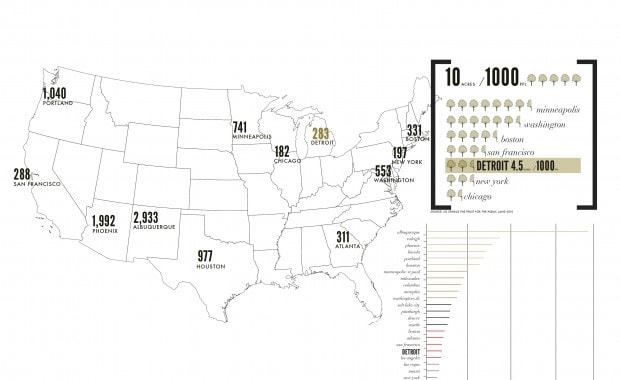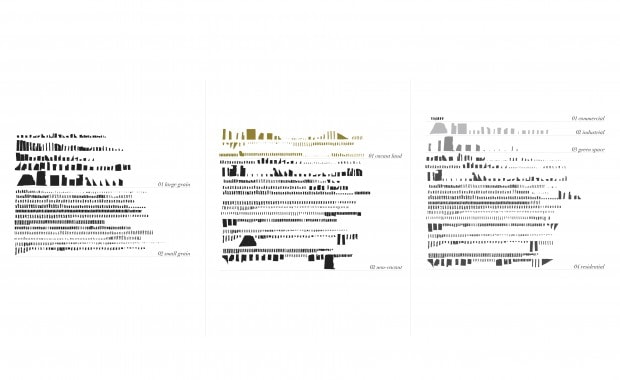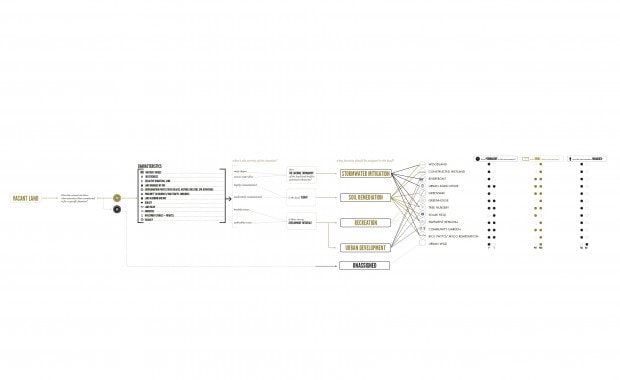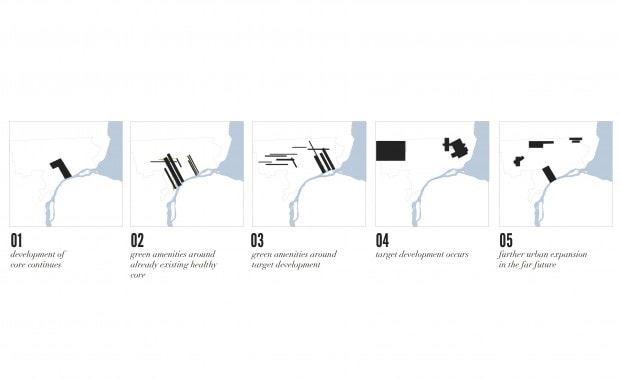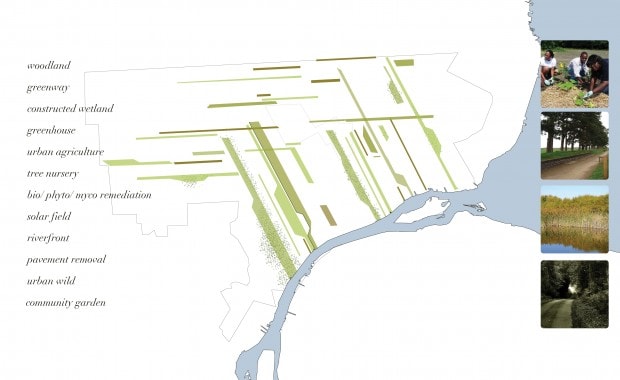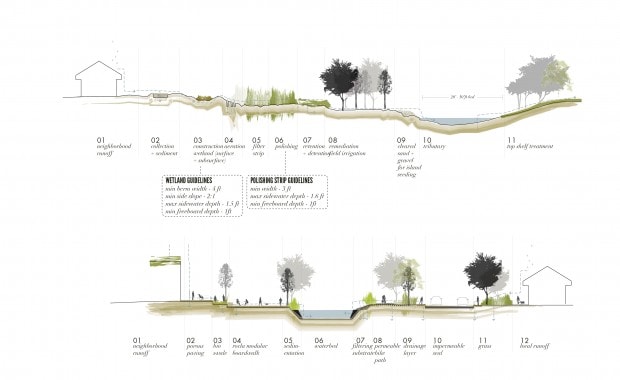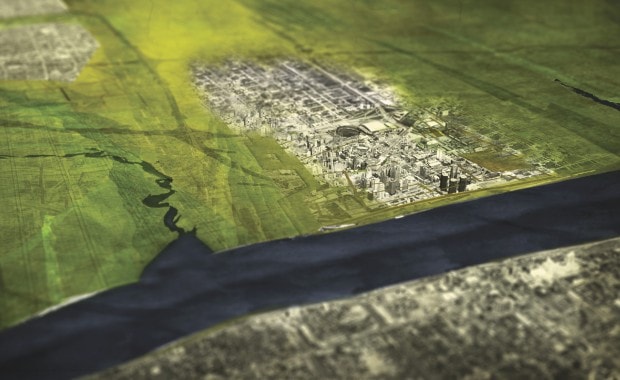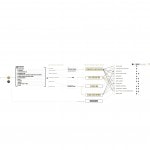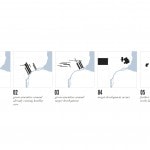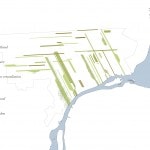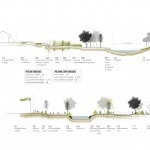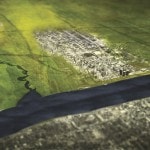Project: [Dis]assemble Detroit
Location: Detroit, MI
Designers: Alamira Noor, Bani Hashim
Year: 2011
Program: Harvard University Graduate School of Design
Faculty Advisors: Toni Griffin, Andrea Hansen
Project description: It goes without saying that unprecedented levels of vacancy have taken a social and economic toll on Detroit. However, the proliferation of unmaintained vacant lots also has potentially transformative repercussions in the form of emergent landscapes that can be collectively harnessed into a new open space system to improve Detroit’s ecological performance and its communities.But first, a change in perception and ideals is required. We must let go of what we know as Detroit, unthink it, interrupt it, and reexamine the pieces to build a better, healthier city. [Dis]assemble Detroit examines Detroit’s ecological health and suggests a series of interventions aimed at improving it. These interventions are tied together by the theme of disassembly: symbolically, through efforts to change the perception of traditional urbanism, but also procedurally, through the identification of sites and intervention typologies as the outcome of a metaphorical “puzzle game” of city. In Detroit today, parcels are scattered into tiny, unusable pieces. In order to operate systemically and connect individual parcels into an ecological network, parcels must be filtered for their potential. The puzzle game sets the tone for reshaping the city by re-sorting vacant parcels independently of their location so they can be evaluated by metrics of parcel size, shape, land use or vacancy.
[Dis]assemble Detroit’s methodology classifies vacant land based on its general characteristics, geographical condition, and the severity of its situation. Based on the resultant classification, the land is assigned one or more of four functions: 1) stormwater mitigation, 2) soil remediation, 3) recreation, or 4) urban development. These functions are implemented across two geographies. The first geography is a series of new performative green bands across Detroit that aid in stormwater mitigation and soil remediation. The second geography consists of three consolidated development areas that are centered around existing healthy cores, where vacant parcels are incentivized for investment.
| previous project | next project |
